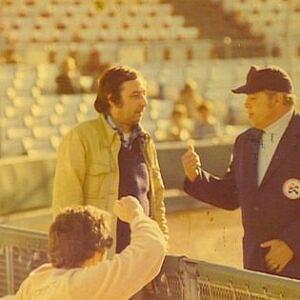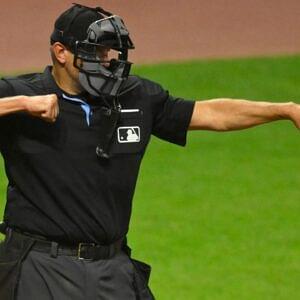I watch a lot of baseball games. I have since I was 10, and that was a long time ago. I’ve done play by play of hundreds of them, but I’ve probably watched a million of them, or two.
My dad was a baseball nut. He took three vacations a year, he went to spring training, the all star game and the world series, as long as it was within driving distance for the taxi driver. He spent the rest on season tickets for the Montreal Expos.
He was quite well known and you could easily hear his voice in the stadium if he had an opinion on something. He was also a friend to the umpires. He would join them in the umpires room on travel day after games and then drive them to the airport.

He loved the umps. Me? Well, we have a more varied relationship. More so of getting it right than the umpires themselves since everyone makes mistakes.
Obviously there are exceptions. There are great, good, mediocre, poor, bad and horrible umpires, but I believe they all share one thing in common: they miss calls on balls and strikes every day.
Consistency a near impossible task
It’s incredible the speed at which pitches are whistling in now, and the quick movement with which the catchers frame each pitch snapping gloves from one position to another.
That movement helps hide the last bit of distance into home plate, making it near impossible to accurately call pitches as ball or strikes with enough precision for it not to affect every single game.
Not to mention how much the umpires enjoy the final act of calling a third strike and the individual nature and theatrical presentation each has developed to make wanting a close pitch to be strike 3, even if it ain’t.

There have been some terrible calls in MLB history that are unforgettable. Don Denkinger in the 1985 world series that killed the St Louis Cardinals. Jim Joyce costing the Tigers Armando Gallaraga a perfect game in 2010.
But pitch calls are more subtle. Silent killers if you will. When you turn strikes into balls and vice versa, and consider how many times a game it happens, you’re just playing with what the final product should be. Worse, we can all see from the TV game strike zones, just how often.
A perfect example came in the final world series game this season, between the New York Yankees and the Los Angeles Dodgers. In the sixth inning of a tie game, the Yankees’ Aaron Judge took a 3-2 pitch that caught all of the upper left portion of the strike zone. Called ball four it pushed Juan Soto to second base.
Soto eventually scored what might have been the game winning run had the Dodgers not come back with two in the eighth to put away their latest title. A run that should not have scored.
Not yet ready for the challenge system
The challenge system has been tested in the minor leagues rather successfully. However, despite the fact the misses by MLB umpires are obvious and plentiful now, don’t expect it at the major league level before at least 2026 according to baseball commisoner Rob Manfred.

How does the challenge system work? Umpires make the ball-and-strike calls, and pitchers, catchers and batters have the ability to make limited amount of appeals if they believe a wrong call was made.
The good news? They will test the new system with MLB umpires in 2025 spring training. Can’t be soon enough to fans yelling at their flat screens all over the baseball world!






